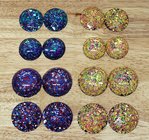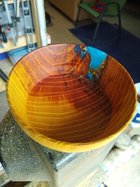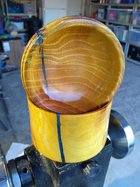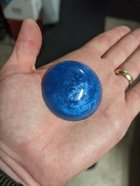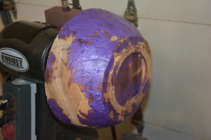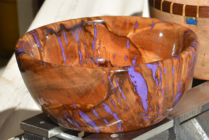I have done a couple searches for tutorials/instructions primarily focued for turners on coloring epoxy to fill voids, but not having much luck. While I have done the occasional filling with epoxy & coffee grounds or india ink with 5min or 15min epoxy. I have also used the turquoise inlay resin priduct on a couple things. But, I have found that it is so thick it doesn't flow well into the smaller crack very well.
I have a walnut platter that has an interesting void and crack that I would like to fill with something more of a contrasting accent. My thoughts are blue/green colored epoxy like on the common epoxy river tables, or maybe something bright gold/brass metallic with mica powders.
While I have seen some youtube turners fill voids with epoxy I really haven't come across a tutorial type video or instructions. Yes, I know every void will be different and require different amounts to fill so there will not be exact "recipes" to fit every occasion. But, at least basic ratios or formulas and processes would be helpful.
Would prefer epoxy as I have turned polyester blanks for stoppers and such before and find it brittle and easy for chip out. But open to expert opinions & advice.
Plus something that doesn't require a pressure pot or vacuum chamber.
Lastly, my shop is in the basement so willing to pay extra for a low odor brand of epoxy.
Thanks
Ricc
I have a walnut platter that has an interesting void and crack that I would like to fill with something more of a contrasting accent. My thoughts are blue/green colored epoxy like on the common epoxy river tables, or maybe something bright gold/brass metallic with mica powders.
While I have seen some youtube turners fill voids with epoxy I really haven't come across a tutorial type video or instructions. Yes, I know every void will be different and require different amounts to fill so there will not be exact "recipes" to fit every occasion. But, at least basic ratios or formulas and processes would be helpful.
Would prefer epoxy as I have turned polyester blanks for stoppers and such before and find it brittle and easy for chip out. But open to expert opinions & advice.
Plus something that doesn't require a pressure pot or vacuum chamber.
Lastly, my shop is in the basement so willing to pay extra for a low odor brand of epoxy.
Thanks
Ricc

